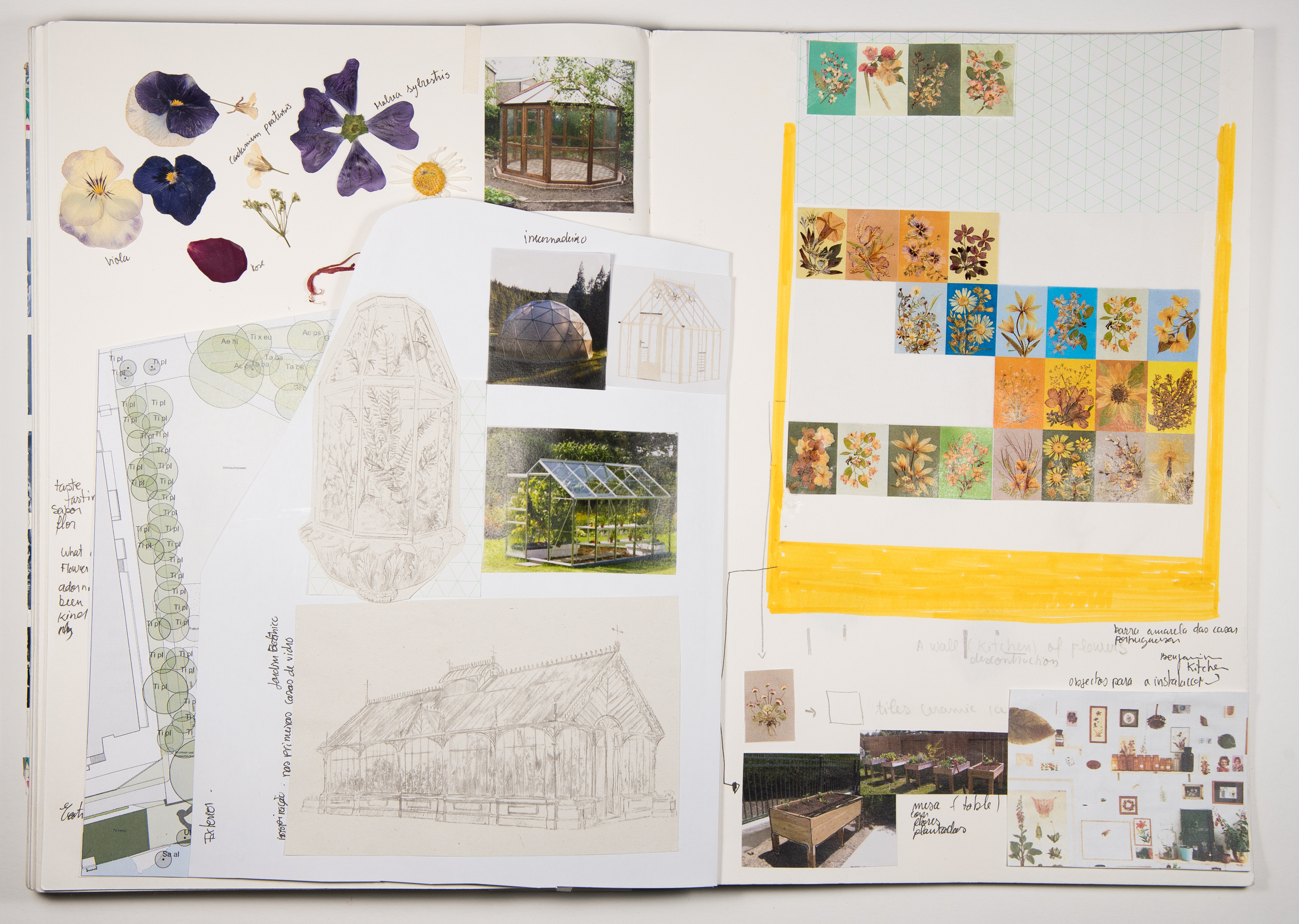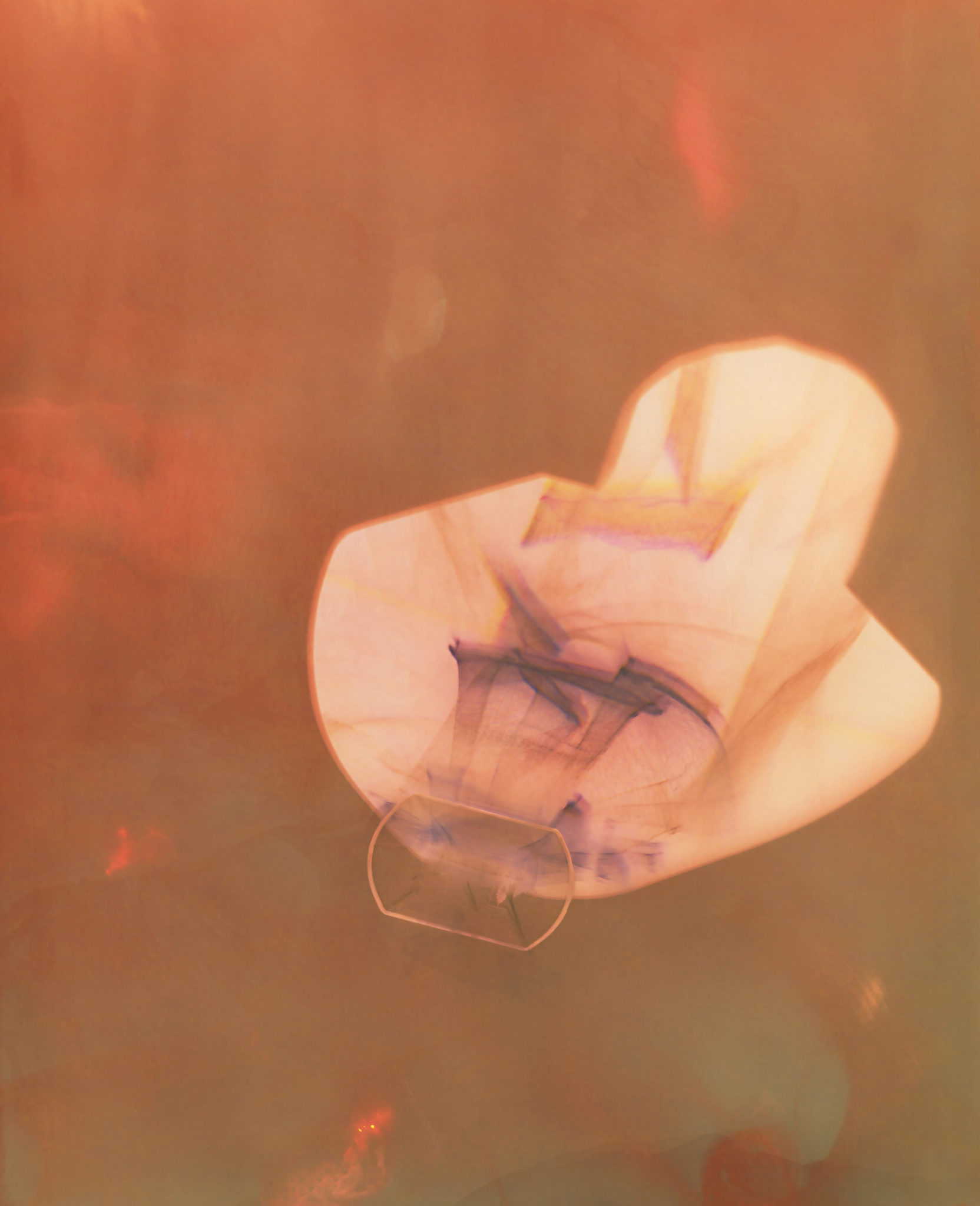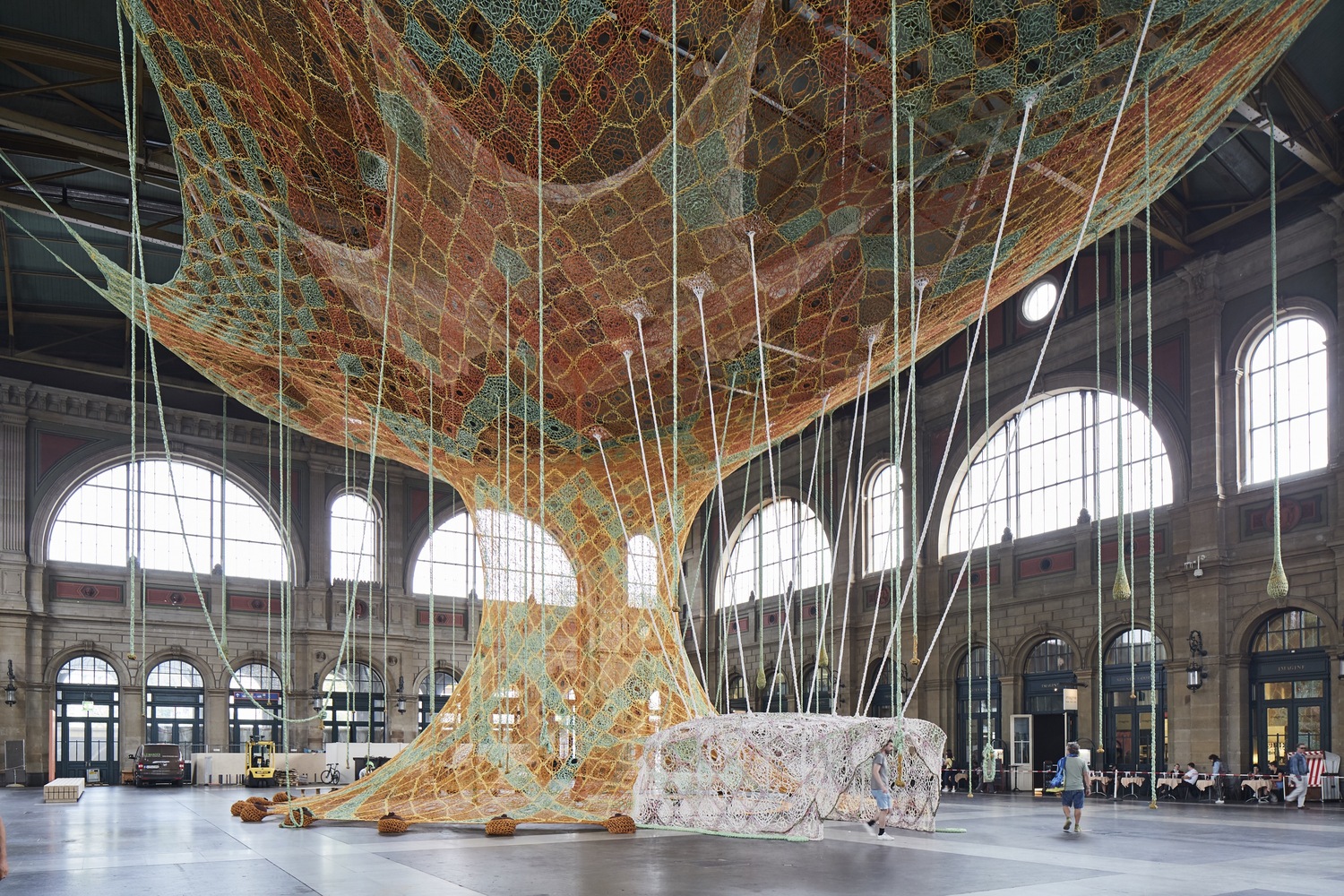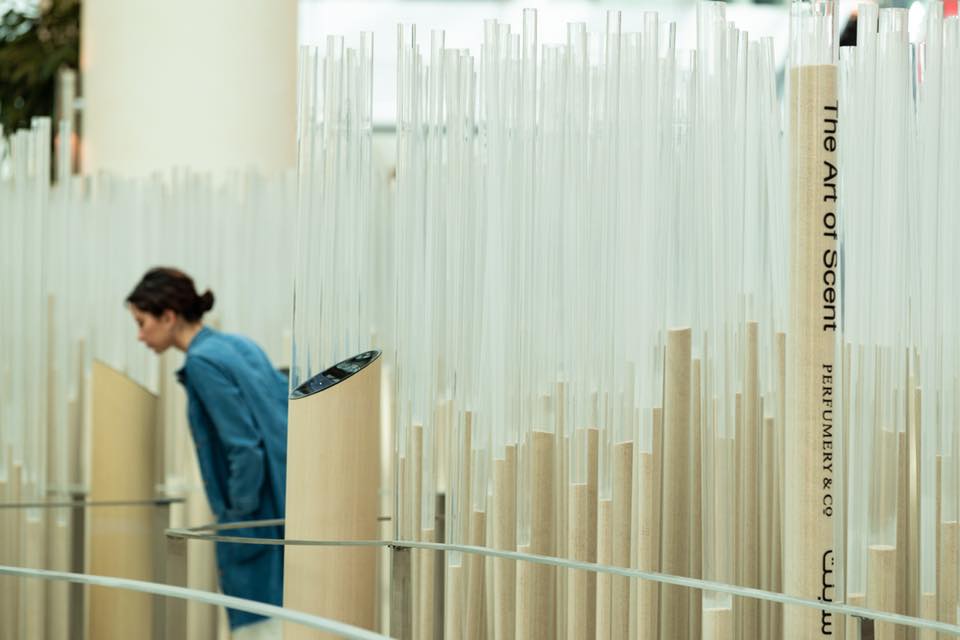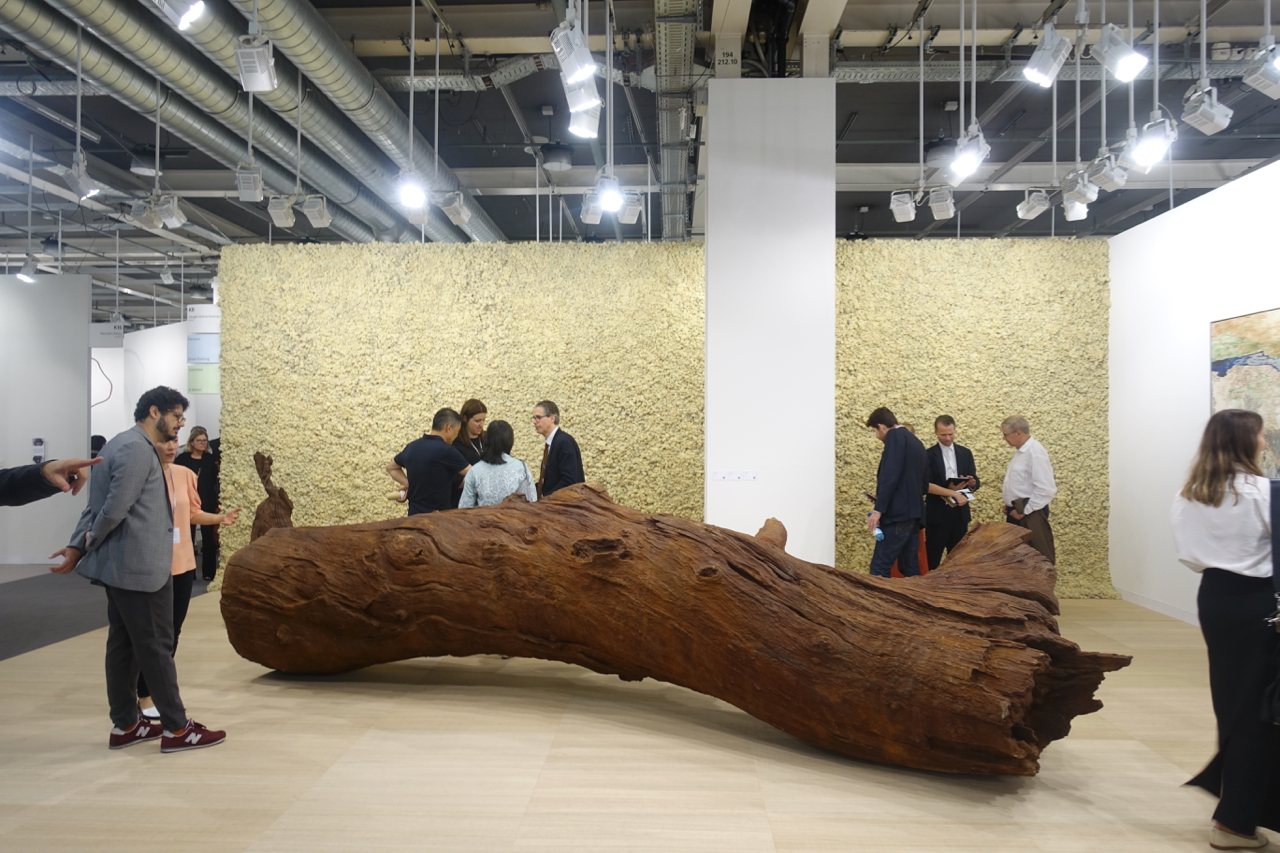«Amuse-bouche. The Taste of Art» is the third art experiment at Museum Tinguely in Basel, 19 February – 17 May 2020, entering the world of the human senses. Continue reading “Amuse-bouche. The Taste of Art” at Museum Tinguely
Category Archives: exhibition
Prix Photoforum 2019
“Durch Glas”, a project on the perception of scent by the Swiss-Canadian artist Christelle Boulé wins the Prix Photoforum 2019. The series of photographs will be exhibited at Photoforum Pasquart.
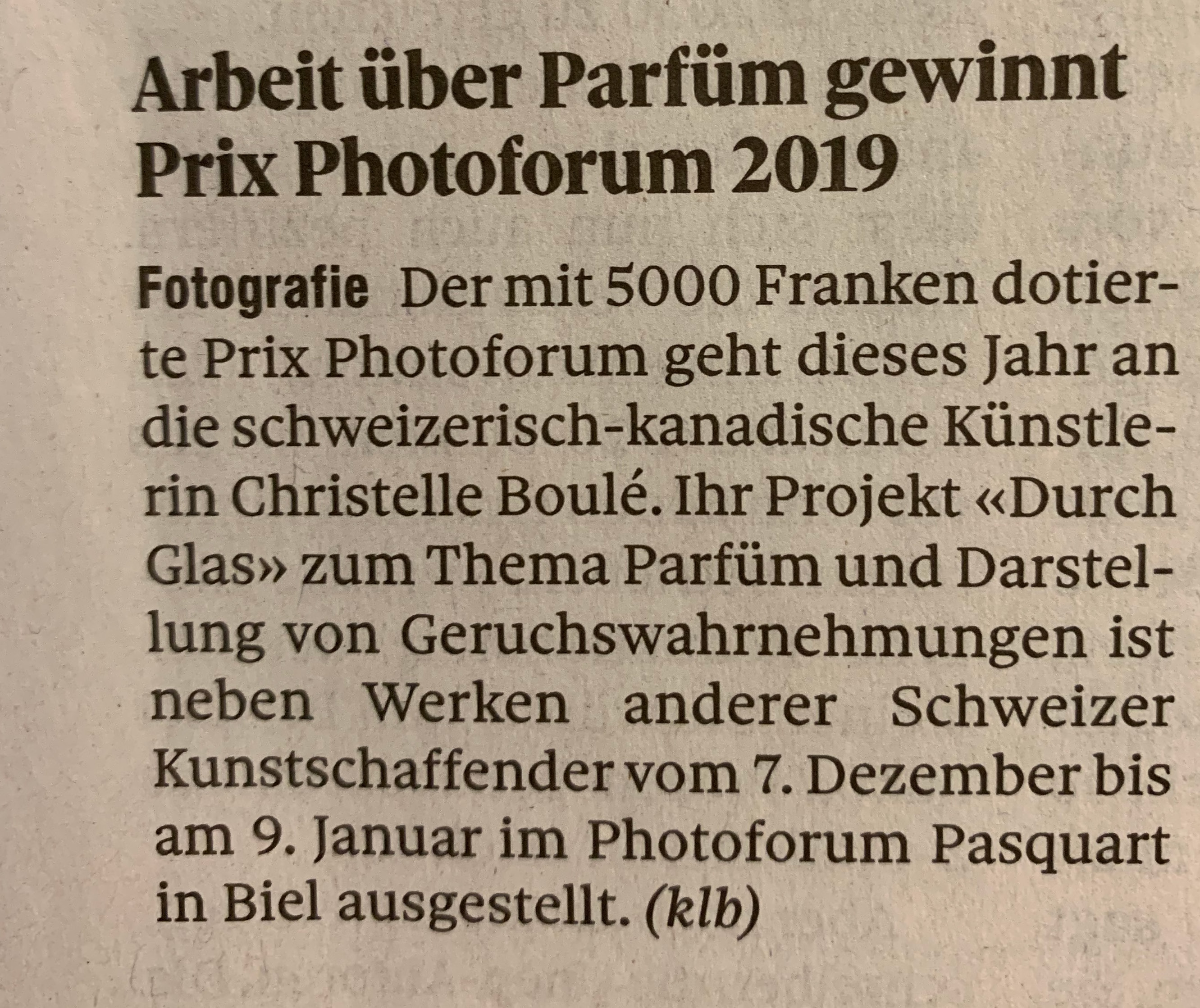
Earlier this year another scent related work was ealier shown at Sillages, an exhibition devoted to olfaction as a theme in contemporary photography, at Biel.
[blog_subscription_form title=”” title_following=”You are already subscribed” subscribe_text=”” subscribe_logged_in=”Click to subscribe to this site” subscribe_button=”Click me!” show_subscribers_total=true]
The fragrance of images
The current exhibition “The fragrance of images†at Opelvillen in Rüsselsheim presents a selection of works from the Barcelona based collection olorVISUAL. Continue reading The fragrance of images
More than functional bottles: Scent & Symbolism
A recent exhibition on perfumed objects and images provides the context for a few remarks on the role of flacons. Even after the finassage the catalogue deserves more attention. Continue reading More than functional bottles: Scent & Symbolism
Spicy art in public space at Zurich
From June 30 to July 29, 2018, the Fondation Beyeler is showing an installation by the Brazilian artist Ernesto Neto (b. 1964 in Rio de Janeiro) in Zurich Main station. Continue reading Spicy art in public space at Zurich
“The Art of Scent” 3.0 at Dubai
“The Art of Scent” curated by Chandler Burr at the Museum of Art & Design in New York in 2012 has been a major milestone in the recent history of scent culture. In an interview during the exhibition with Artforum Chandler Burr referred even to perfume (!) “as an artistic medium”. The show presented twelve pivotal fragrances, dating from 1889 to the present. In 2015, it was also presented in Madrid. Later on the show was also presented in Spain.
Given the commercial nature of the scents presented in the exhibition it is almost logical to position the 3rd edition in a shopping mall in Dubai.
Running until July 12, The Art of Scent Exhibition is organised by Perfumery & Co and curated by former New York Times Perfume Critic, Chandler Burr, in collaboration with Art Emaar. The Art of Scent Exhibition delves into the works of Thierry Wasser, Christophe Laudamiel, Patricia de Nicolaï, Daphnée Bugey and Jérome Epinette. According to media coverage Burr has paired each work of scent art with a stylistically and technical similar work of visual art, chosen from s extensive collection of contemporary works – displayed in Fashion Avenue.
[blog_subscription_form title=”” title_following=”You are already subscribed” subscribe_text=”” subscribe_logged_in=”Click to subscribe to this site” subscribe_button=”Click me!” show_subscribers_total=true]
ArtBasel 2018: Wake up and smell the…
Art Basel offers a premier platform for renowned artists and galleries. The 49th edition brings together about 290 galleries from 35 countries and opened earlier this week. In fact, “art is now absolutely a consumer product, and that’s the huge difference. It’s a whole different world”, as Paula Cooper recently noted in the New York Times.  Paula Cooper, 80, whose gallery, opened in New York in 1968 has been pivotal in shaping the art world as we know it today. Yet, Art Basel is more than just a fair in the commercial sense of the word. Surprisingly, an attentive visitor can also encounter art in a multi-sensory way and make a few observations on the state of the sense of smell in contemporary art.
Irritating sensation at Art Basel
A pungent smell surrounds the booth of the well known Berlin based gallery Neugerriemenschneider. It emanates from Olafur Eliasson’s Moss Wall (1994). And please note: As iterated on the artist’s website the residual scent is an intentional component of the work. Thus, it is not an accidental aspect. The Icelandic-Danish artist was 27 years old and just starting to gain recognition in the international art world when working on the 3.5× 10m sized wall. What one sees and smells is Cladonia rangiferina, which is also called reindeer moss, a lichen native to the northern regions. The lichen is woven into a wire mesh and mounted on the wall of the booth as Eliasson points out on his website. Thus, the work brings a natural phenomena into the highly constructed space of an exhibition, where the visitor might notice how nature might be a construction as well. As the lichen dries, it shrinks and fades. However, when the installation is watered, the lichen expands and emits a pungent odor. The gallerist actually told me about spraying water on the lichen.
Moss Wall as major early work
This major work from Eliasson’s early career has previously been shown at the Museum of Modern Art in New York, SFMOMA in San Francisco, and the Moderna Museet in Stockholm, among other institutions. In 2017, the wall was also part of a group show at GalerÃa Elvira González in Madrid entitled “Sense of Smell”.
The hallways at Art Basel are crowded and packed even during the private days. Since an art fair epitomizes the principles of our attention economy, numerous artworks are in severe competition for the limited attention of the visitors. Thus, it is a special situation for presenting a piece that works with the subtle sense of smell. Yet, I have seen collectors that notice the sharp or irritating sensation of the smelly wall. But the situation differs significantly from the sensory and even meditative experience of a presentation in a museum:
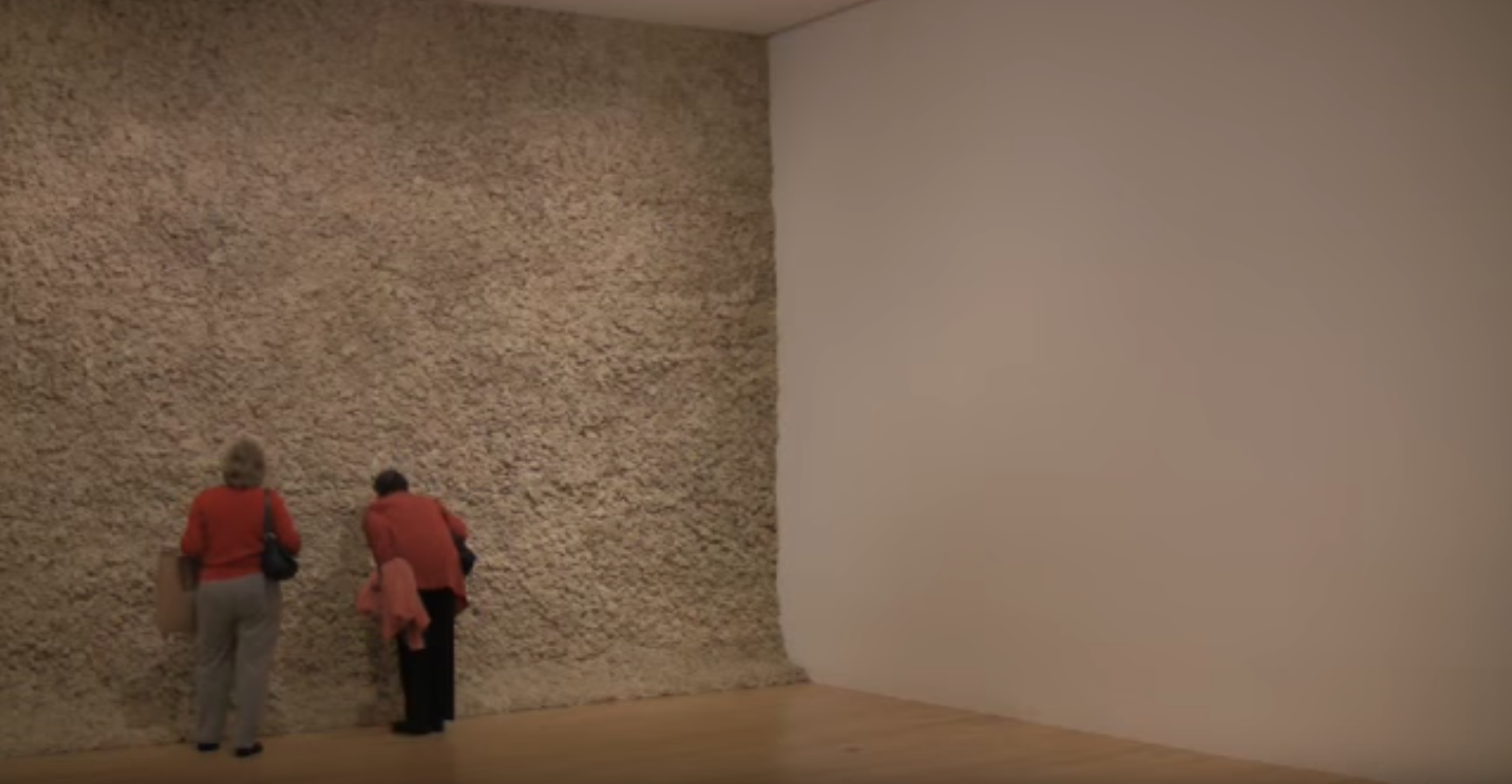
This film published by the Leeum Museum, Seoul captures the sensual experience of the wall:
However, in the specific context of a fair the smell becomes a minor issue. Even people who spend some time at the booth hardly engage with the work in a multi-sensory way as the video from the museum exhibition demonstrates.
Commercial context sanitizes works of art
The commercial context seems to sanitize a work of art that actively involves the sense of smell. Talking to the gallerist I got the impression that for him the sensory qualities of the work are of minor importance. Yet, it is pretty clear that the smell is conceptually a key element for showing “constructed nature”.
Smell & attention economy
Let’s come back to the attention economy. The pungent moss smell does certainly not evoke the pleasant ambience of a luxury retail setting. Yet, the moss smell might be an important factor in the attention economy. The booth subtly attracts attention across different sensory modalities. Thus, it might not be a surprise that the online platform Artsy, some call it the “Pandora for art,†lists the the booth among the 15 Best Booths at Art Basel and discuses the Moss Wall as one of two works that stand out:
Wake up and smell the art!
Stay updated and enter your email address to follow us!
[blog_subscription_form title=”” title_following=”You are already subscribed” subscribe_text=”” subscribe_logged_in=”Click to subscribe to this site” subscribe_button=”Click me!” show_subscribers_total=true]
We have actually shared observations from Art Basel before. If you missed this, please have a look.
Inhale * Hold * Exhale
The current exhibition Inhale – Hold – Exhale at the Kunstmuseum Thun is the first institutional show of the Danish artist Jeppe Hein in Switzerland (until 29 July 2018). Continue reading Inhale * Hold * Exhale
Exhibition in Berlin: “It smells like… flowers & fragrances”
The exhibition ‘It smells like… flowers & fragrances’, on view at me Collectors Room in Berlin from 14 April to 1 July 2018, reveals the undiminished potential of the visually rich subject of depictions of flowers and the subversive olfactory power of fragrances in contemporary art. The curator is Dr Heike Fuhlbrügge. Continue reading Exhibition in Berlin: “It smells like… flowers & fragrances”
“Scent Culturalizing” the end of an industrial era
Germany will shut down its remaining black coal mines by the end of this year. This plan seals the fate of the sector that powered the country’s industrial revolution and post-war economic miracle. Since its early beginnings in the early 1970s this fundamental shift has had widespread implications the former industrial heartland of Germany. Given its links to human memory smells are medium of choice to work on the end of an industrial age.
Thus, the Art Museum at Mühlheim an der Ruhr takes this opportunity to invite Helga Griffiths, an artist who has been working across the boundaries of science, technology and different media (including the sense of smell) for quite a while. We have previously wrote about her work.
For the upcoming exhibition (6 May – 16 September 2018) Griffiths starts with coal as a material for different transformative processes. Destillation technologies are used to arrive at the essence of coal. A special scent edition will be offered on the occasion of this exhibition (allowing the user to keep memories of this passing industrial age).
